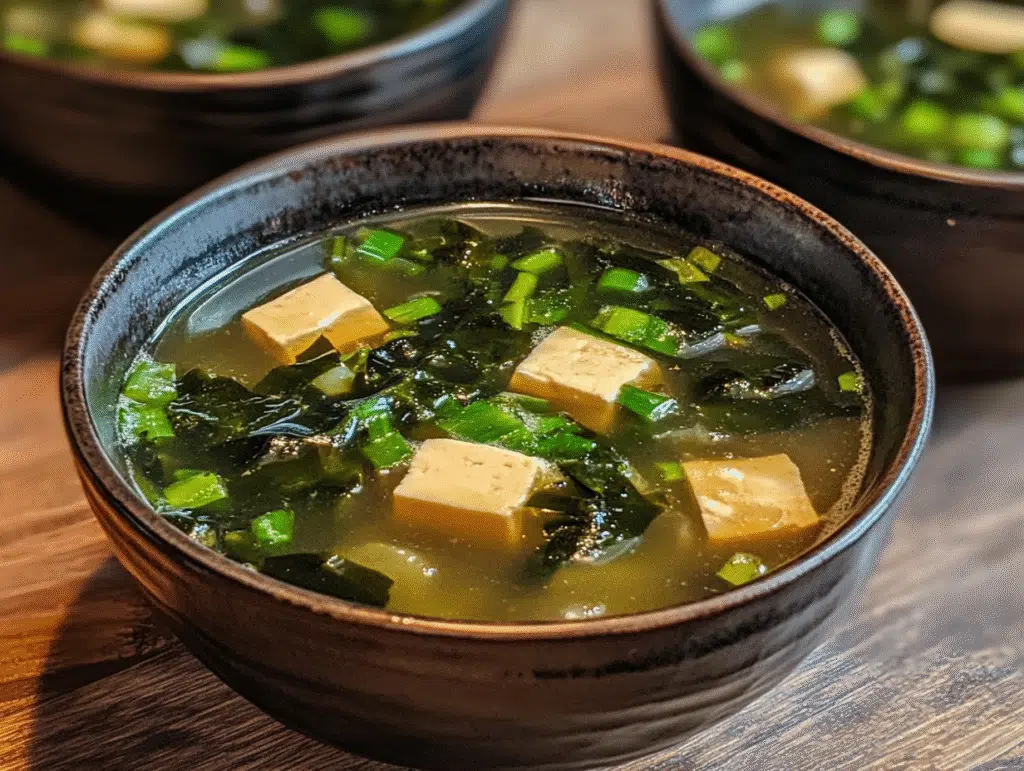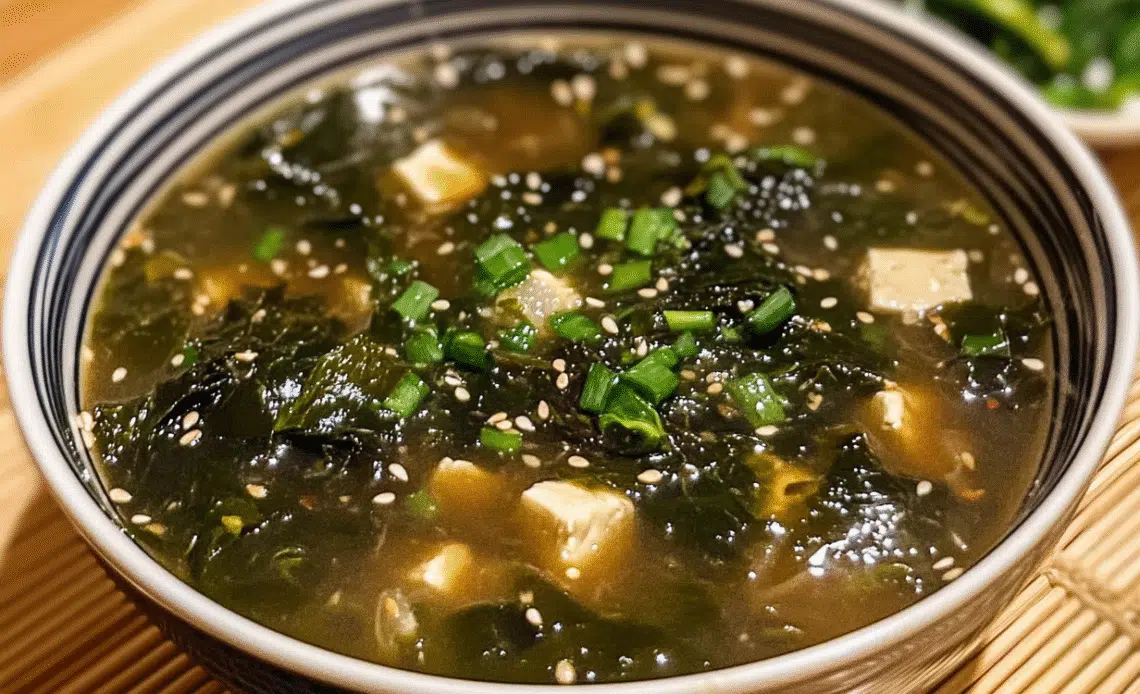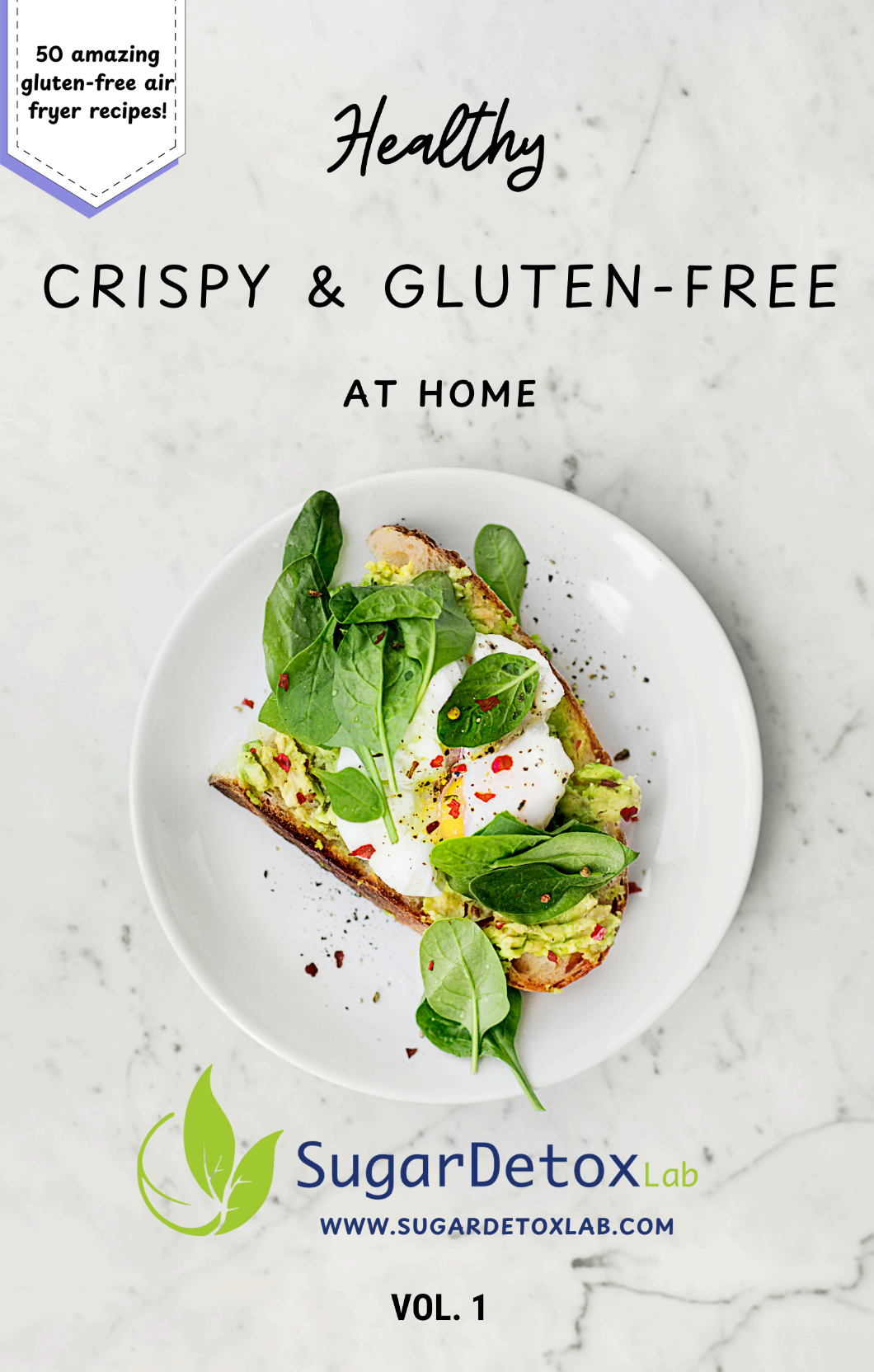Seaweed Soup with Tofu is a light yet deeply satisfying dish that celebrates the elegance of simplicity while delivering powerful nutrition. Embarking on a sugar detox is about more than just cutting out sweets—it’s a holistic shift toward fueling your body with foods that provide cellular-level nourishment and support overall metabolic health. Often, the most powerful foods are also the simplest, rich in vitamins and minerals without added sugars or processed ingredients. This clear, savory broth embodies that philosophy, harnessing the ocean’s bounty of minerals from seaweed and pairing it with plant-based protein from tofu. The result is a naturally detoxifying, low-calorie, nutrient-dense meal that not only resets your body but also delights your taste buds.
What Is Seaweed Soup with Tofu and Why It Matters?
Seaweed soup, known as miyeok-guk in Korea, is a traditional dish often enjoyed on birthdays for its symbolic ties to health and motherhood, and as a recovery food after childbirth due to its high mineral content. The traditional version is typically made with beef brisket or seafood to create a rich broth, and while nutritious, it can sometimes be higher in sodium.
Our version of Seaweed Soup with Tofu is a conscious adaptation that honors the spirit of the original while optimizing it for a modern, sugar-detoxifying lifestyle. We keep the optional strip steak for a touch of umami depth but use it sparingly, making the soup primarily plant-forward. The real stars are the mineral-dense seaweed and the clean, protein-packed tofu. By using white miso for seasoning, we add a layer of probiotic-rich, savory complexity without relying on excessive salt or sugar-laden stocks. This approach to Seaweed Soup with Tofu provides a profoundly cleansing and hydrating experience, delivering a massive nutritional payload with minimal caloric burden and absolutely zero added sugar.

Unpacking the Health Benefits
This soup is a true superfood in a bowl. Each ingredient is a functional food chosen for its unique contribution to wellness, making every spoonful a step towards better health.
- Seaweed (Wakame/Kelp): This is the heart of the soup. Seaweed is one of the most nutrient-dense foods on the planet. It is an exceptional source of iodine, a trace mineral absolutely critical for proper thyroid function, which regulates metabolism, energy, and mood. It’s also loaded with other minerals like calcium, iron, and magnesium, as well as antioxidants. The soluble fiber in seaweed, such as alginate, can act as a prebiotic and may help support gut health.
- Tofu: This provides a soft, delicate texture and a complete plant-based protein. Tofu is made from soybeans and is a fantastic source of protein, calcium, and manganese. The protein and fat content help to make this light soup more satiating, balancing energy levels and preventing blood sugar spikes.
- White Miso: This fermented soybean paste is a cornerstone of Japanese cooking and a healthier alternative to many processed seasonings. The fermentation process creates probiotics that support a healthy gut microbiome, which is intricately linked to overall health, including blood sugar regulation and immune function. It provides a savory, umami depth that enhances flavor without needing added sugar.
- Toasted Sesame Oil: Used as a finishing oil, it provides a rich, nutty aroma and a dose of healthy monounsaturated and polyunsaturated fats. These fats are essential for the absorption of the fat-soluble vitamins present in the soup.
- Aromatics (Garlic & Scallions): These add more than just flavor. Garlic contains allicin, a compound with potent anti-inflammatory and immune-boosting properties. Scallions are rich in vitamin K and antioxidants.
This combination results in a soup that is anti-inflammatory, supportive of thyroid and gut health, hydrating, and perfectly aligned with a sugar-free, clean-eating lifestyle.
Navigating Potential Challenges
- Ingredient Sourcing: Dried seaweed (wakame is most common for soup) is readily available in the international aisle of most supermarkets, in Asian grocery stores, and online. It is sold in dried sheets or pre-cut flakes. White miso paste can be found in the refrigerated section of health food stores or well-stocked supermarkets, often near the tofu.
- Rehydrating Seaweed: Dried seaweed expands significantly when it comes into contact with water. A quarter cup of dried crumbles will yield a generous amount for the soup. There’s no need to pre-soak it for this recipe; it will perfectly rehydrate as the soup simmers.
- Working with Miso: A key principle of cooking with miso is to never boil it. Boiling can kill the beneficial probiotics and make the flavor harsh. Always stir miso into the soup at the very end, off the heat, to preserve its health benefits and delicate flavor.

Tips and Trends for Healthy Home Cooking
The growing interest in functional foods and “food as medicine” is perfectly exemplified by this recipe. Ingredients like seaweed and miso, once considered exotic, are now celebrated staples in health-conscious kitchens. Utilizing AI-based nutrition apps can help you understand the precise mineral content you’re consuming, turning a simple meal into a targeted nutritional strategy. The trend towards intuitive eating and listening to your body’s cues for light, nourishing foods is also on the rise. This Seaweed Soup with Tofu is the perfect answer to those cravings for something simple, clean, and deeply restorative.
Frequently Asked Questions
Question: I have a soy allergy. Can I make this Seaweed Soup with Tofu without the tofu and miso?
Answer: Yes, you can. The soup will still be flavorful from the seaweed and aromatics. For the miso, you could substitute with a very small amount of coconut aminos for umami (start with 1 teaspoon and adjust), though the flavor profile will be different. For the tofu, you can simply omit it or add diced mushrooms for a different texture.
Question: The soup tastes a bit bland to me. How can I enhance the flavor without sugar?
Answer: The depth of flavor can be easily boosted. First, ensure you’ve used enough miso. You can also add a splash of tamari or coconut aminos. A teaspoon of grated fresh ginger added with the garlic can provide a lovely zing. Finally, a dash of fish sauce (if you’re not vegan) would add a tremendous amount of savory depth.
Question: Can I use a different type of seaweed?
Answer: Absolutely. While wakame is traditional for soup and has a delicate texture, you can use other types. Kelp will work well. Avoid using nori (the seaweed used for sushi), as it can become slimy when simmered in soup.
Question: Is this soup suitable for a keto diet?
Answer: Yes, this soup is naturally very low in carbohydrates, making it an excellent choice for a keto lifestyle. Just be sure to check that your miso paste doesn’t contain any added sugars or grains (some cheaper varieties might).
Conclusion
This Seaweed Soup with Tofu is more than a meal; it’s a nourishing ritual. It’s a gentle, yet powerful way to replenish your body’s mineral stores, support your digestive system with probiotics, and enjoy a warm, comforting bowl of soup that is completely free from added sugars and processed ingredients. It represents the core philosophy of eating for wellness: simple, intentional, and profoundly beneficial.
We encourage you to embrace the unique flavors and incredible health benefits this soup has to offer. It’s a quick, easy, and elegant dish that is perfect for a light lunch, a soothing dinner, or any time you need a hydrating, mineral-rich boost. We’d love to hear how you enjoy it! For more recipes to support your sugar-free journey, explore the rest of our content on sugardetoxlab.com.







